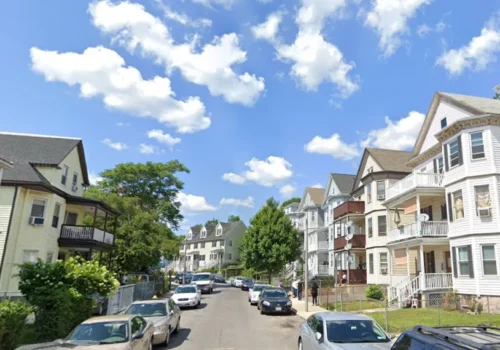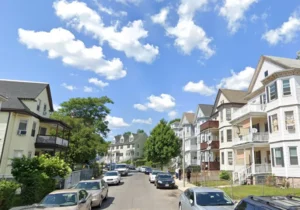Halfway House Rules for Inmates: What You Need to Know

There are several factors to consider before visiting a friend or family member who is staying in a halfway house. Visitors must arrive on time if a loved one’s facility requires scheduled appointments. The residents keep themselves fairly occupied inside the house with daily activities and other program requirements.
Halfway Houses: What You Need to Know and Alternatives for Recovery
The goal is to successfully reintegrate these individuals back into society. They are required to work and pay for their room and board, participate in counseling as needed, drug and alcohol testing, cognitive behavioral and life skills training, and pay restitution and child support, etc. A halfway house typically serves as a group residence for people reentering the community from incarceration, sometimes as a condition of parole or post-prison supervised release. Local, state, and federal agencies run them, as do private subcontractors who get government funding and nonprofits that rely on contributions. While generally referred to as halfway houses, they might be formally called something like “transitional centers” or “residential reentry centers.”
- If you or a loved one is approaching release or seeking guidance on federal halfway house placement, seek professional support.
- In such cases, the residents are immediately evicted from the house and appropriate charges may also be filed.
- Halfway houses aim to foster sound financial habits and set residents up for long-term stability and independence.
- The slow reintegration into society including a routine schedule and accountability may help create a solid foundation to rebuild a sober life.
- The benefits of halfway houses include reinforced accountability, peer encouragement, structured recovery support, and a gradual transition into independent living.
- They offer a middle step for people who are committed to being sober but aren’t ready to live independently.
Federal Halfway Houses
- If you’re committed to living a sober lifestyle but aren’t ready to transition to life at home, a halfway house is a great option to consider.
- Noncompliance with halfway house rules can result in significant legal and personal repercussions.
- Cases of COVID-19 are uniquely dangerous in halfway houses due to the work release component of many facilities.
Family members also play an essential role—supporting their loved ones while setting clear boundaries. It’s more vital than ever in ensuring long-term sobriety post-halfway house stay. The power within a community cannot be overstated when maintaining long-term sobriety halfway house stay. Imagine walking down a dark alley alone versus with a group – it feels different. Halfway houses have specific visitation policies designed to foster an environment conducive to recovery. This isn’t about being picky; it helps maintain security and minimize potential triggers that could hinder progress.

Addiction Help Newsletter – Sidebar

The cost of staying in a halfway house ranges from $450 to $1,200 per month, making it a cost-effective alternative to incarceration or inpatient treatment. A halfway house, also known as a “sober living house”in some states, is a transitional living facility for those in recovery from drugs or alcohol. Some people go to a halfway house after leaving along-term addiction treatment center, prison or a homeless situation, while others go to be in a sober living environment as they begin their journey to recovery. Understanding the structure and rules of federal halfway houses can be crucial for successful reintegration. The benefits of structured sober living, including regular schedules and supportive programs, can significantly help residents build a stable and productive life after incarceration.


Federal law, specifically 18 U.S.C. § 3624(c), requires the Bureau of Prisons to ensure that inmates spend a portion of their final sentence in conditions that prepare them for successful reentry. This includes placement in halfway houses or home confinement to reduce recidivism and promote public safety. Boulder County has entered into contracts with two private vendors who provide residential community corrections services. CoreCivic operates the Longmont Community Treatment Center (LCTC) and ICCS operates ICCS-Boulder (formerly known as BCTC). The programs run by the vendors provide monitoring of client whereabouts, random house counts and room searches for purposes of security and containment.
However, a “halfway house” may sometimes refer to a court-ordered program. Most who reside at halfway houses and sober living homes have already completed a medical detox and initial treatment program. Halfway houses and sober living homes are not equipped to provide the medical care and mental halfway house rules health services provided at a dedicated treatment facility, and neither is a good replacement. Overcoming addiction and managing mental health challenges are critical parts of a successful transition from incarceration to community life.
- Currently, VOA Hutchins and VOA Fort Worth have waivers for internet access for workforce development and reentry purposes on a supervised basis.
- Staff members monitor residents, conduct regular substance screenings, and enforce curfews to maintain a substance-free environment.
- A prisoner with a record of failed halfway house experiences or violence while incarcerated will have a tough time getting placed.
- No serious action is taken until the number of warning exceeds a certain number.
- In this article, we’ll go through the different halfway house rules and regulations.
Minors are allowed to visit, provided they accompanied by a guardian or a parent.
These early programs aimed to ease the transition from incarceration to community life, helping former offenders avoid recidivism by providing guidance, structure, and resources. To understand the importance of federal halfway houses today, it helps to look at how these facilities have changed and adapted. The history reveals the shifting priorities of the justice system, from punishment to rehabilitation and community reintegration. This section explores the origins and key milestones that have shaped the modern federal halfway house system.

This has involved a shift in the agency’s correctional mission, from the strict confinement model of the mid and late 1990’s to a new Reentry model. A prisoner’s eligibility for residence in a halfway house depends on many factors, including whether the prisoner falls under state or federal jurisdiction. For state inmates, the determination is intensely local, depending on state law, the Twelve-step program capacity of local jails and prisons, and the availability of halfway houses.







